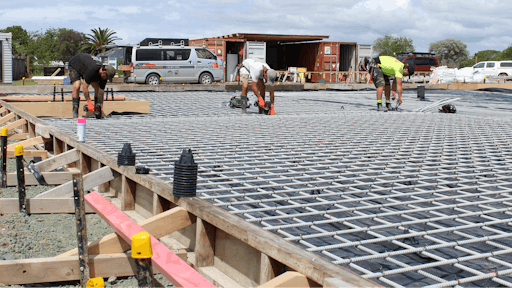How Composites are Transforming the Landscape of Building And Construction Products
How Composites are Transforming the Landscape of Building And Construction Products
Blog Article
Unlocking the Ecological Advantages of Recycled Composites in Building And Construction and Design
In the world of building and construction and design, the usage of recycled composites holds considerable pledge for improving sustainability techniques and reducing environmental impact. The shift towards a more sustainable future in these industries hinges on unlocking the full potential of recycled composites.

Ecological Influence Decrease
The decrease of ecological influence via the use of recycled compounds in building and construction and layout plays an important role in lasting practices. By incorporating recycled compounds into structure materials, the building sector can considerably decrease its carbon impact and contribute to a more environment-friendly future. These sustainable products, made from repurposed plastics, wood fibers, or other recycled elements, use a practical alternative to traditional construction materials without endangering on high quality or sturdiness.
Recycled composites aid divert waste from landfills and lower the need for removing resources, thus preserving natural deposits. Additionally, the production process of these compounds commonly consumes much less energy and sends out fewer greenhouse gases contrasted to producing virgin products (composites). This shift in the direction of using recycled compounds not only reduces ecological damage yet also advertises a circular economic situation by encouraging the reuse of products that would certainly otherwise be thrown out
Waste Minimization
With a focus on decreasing waste in building and layout, the integration of recycled compounds supplies a sustainable option to lower environmental influence. Waste minimization is an essential aspect of sustainable techniques, and the use of recycled composites provides a possibility to achieve this objective properly. By utilizing materials that have actually currently offered their initial purpose, such as recycled plastics or recovered timber fibers, the construction and design markets can significantly decrease the amount of waste produced and sent out to land fills.
Recycled compounds have the potential to divert considerable quantities of waste from typical disposal methods, contributing to a more circular economic climate where resources are used effectively. Additionally, the production procedure of recycled composites frequently consumes much less power and generates fewer emissions compared to virgin products, additionally lowering the ecological footprint of construction and style tasks.
Carrying out waste minimization approaches via the unification of recycled composites not only helps in saving all-natural resources but additionally advertises an extra lasting strategy to building and developing for a greener future.
Power Preservation
Including recycled composites not just lessens waste in building and layout yet additionally plays a critical role in enhancing power preservation practices within the sector. Using recycled composites in construction can dramatically add to energy conservation with different means. The production of virgin products commonly calls for substantial power inputs, whereas using recycled composites consumes much less power, thereby lowering general energy usage. Additionally, integrating recycled compounds can contribute to far better insulation residential properties in structures, minimizing the requirement for excessive home heating or cooling, and consequently reducing power use for environment control. The lightweight nature of numerous recycled compounds can lead to lighter frameworks, needing important site much less energy for transportation and setup. By advertising using recycled compounds in building and construction and layout, the sector can make considerable strides in the direction of achieving energy efficiency and lowering its carbon footprint, inevitably contributing to a much more lasting developed setting.
Carbon Footprint Decrease
Enhancing sustainability practices through the utilization of recycled compounds in building and construction and layout dramatically minimizes the carbon footprint of the industry. By incorporating recycled products right into the production of composites, the demand for virgin sources reduces, resulting in lower power usage and greenhouse gas discharges connected with traditional production procedures. This reduction in carbon impact is essential in combating environment change and advertising an extra ecologically friendly approach to building and construction and style.
Furthermore, the usage of recycled composites also aids in drawing away waste from landfills, consequently alleviating the environmental effect of disposal and promoting a round economy. The carbon footprint decrease achieved via the adoption of recycled compounds aligns with the international push in the direction of sustainable techniques and the decrease of commercial discharges. It showcases a dedication to responsible source management and a change towards greener options in the construction and style sectors. Eventually, by focusing on the integration of recycled compounds, the industry can make considerable strides in decreasing its carbon footprint and contributing to an extra sustainable future.
Lasting Future
The assimilation of recycled compounds in building and design not just addresses instant ecological worries but additionally lays a solid structure for a sustainable future in the industry. By including recycled composites right into building products and products, the building and construction and style sectors can dramatically decrease their dependence on virgin resources, leading to a much more round economic climate. This change towards sustainability is critical for alleviating the ecological effect of traditional building techniques, which commonly result in high levels of waste generation and source depletion.

Final Thought
Finally, recycled compounds use substantial ecological benefits in building and style by lowering ecological influence, decreasing waste, saving energy, decreasing carbon impact, and promoting a lasting future. Welcoming the use browse around this web-site of recycled compounds can add to an extra environmentally-friendly technique to structure and style, inevitably leading to a more sustainable and greener future for all.
The reduction of environmental effect with the use of recycled compounds in building and layout plays an important duty in sustainable methods.With an emphasis on reducing waste in building and layout, the integration of recycled composites provides a sustainable remedy to lower ecological influence. By advertising the use of recycled composites in building and construction and style, the sector can make considerable strides in the direction of accomplishing power effectiveness and reducing its carbon footprint, ultimately adding to an extra sustainable constructed environment.

Report this page